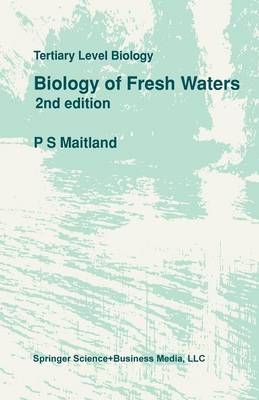
Biology of Fresh Waters
Kluwer Academic Publishers (Verlag)
978-0-216-92989-0 (ISBN)
1 The Aquatic Environment.- 1.1 Physics.- 1.2 Chemistry.- 1.3 Biology.- 2 Plants and Animals of Fresh Waters.- 2.1 Viruses.- 2.2 Bacteria.- 2.3 Algae.- 2.4 Fungi.- 2.5 Lichens.- 2.6 Stoneworts.- 2.7 Bryophytes.- 2.8 Pteridophytes.- 2.9 Spermatophytes.- 2.10 Protozoans.- 2.11 Sponges.- 2.12 Coelenterates.- 2.13 Platyhelminths.- 2.14 Proboscis worms.- 2.15 Aschelminths.- 2.16 Acanthocephalans.- 2.17 Entoprocts.- 2.18 Polyzoans.- 2.19 Molluscs.- 2.20 Annelid worms.- 2.21 Arthropods.- 2.22 Chordates.- 3 Standing Waters: Lakes, Ponds and Pools.- 3.1 Origin.- 3.2 Physical characteristics.- 3.3 Chemical characteristics.- 3.4 Biological characteristics.- 3.5 Classification.- 4 Running Waters: Rivers, Streams and Trickles.- 4.1 Physical characteristics.- 4.2 Chemical characteristics.- 4.3.1 Habitats.- 4.4 Classification.- 5 Field Studies: Sampling in Fresh Waters.- 5.1 Physical.- 5.2 Chemistry.- 5.3 Biology.- 6 Adaptation to Environment: Strategies for Survival.- 6.1 Major adaptations.- 6.2 Adaptation to specific habitats.- 7 Communities and Energy Flow.- 7.1 Standing waters.- 7.2 Running waters.- 7.3 Specialised communities.- 7.4 Community structure.- 8 Fresh Water and Humans.- 8.1 Water resources.- 8.2 Water use.- 8.3 Human influence.- 8.4 Pollution prevention.- 8.5 Integration of water use.- 9 A Global View.- 9.1 Fresh waters around the world.- 9.2 International problems.- 9.3 The future.- References.
| Reihe/Serie | Tertiary Level Biology |
|---|---|
| Zusatzinfo | XI, 276 p. |
| Verlagsort | Dordrecht |
| Sprache | englisch |
| Maße | 140 x 216 mm |
| Themenwelt | Geisteswissenschaften |
| Naturwissenschaften ► Biologie ► Limnologie / Meeresbiologie | |
| Sozialwissenschaften | |
| ISBN-10 | 0-216-92989-X / 021692989X |
| ISBN-13 | 978-0-216-92989-0 / 9780216929890 |
| Zustand | Neuware |
| Haben Sie eine Frage zum Produkt? |
aus dem Bereich


